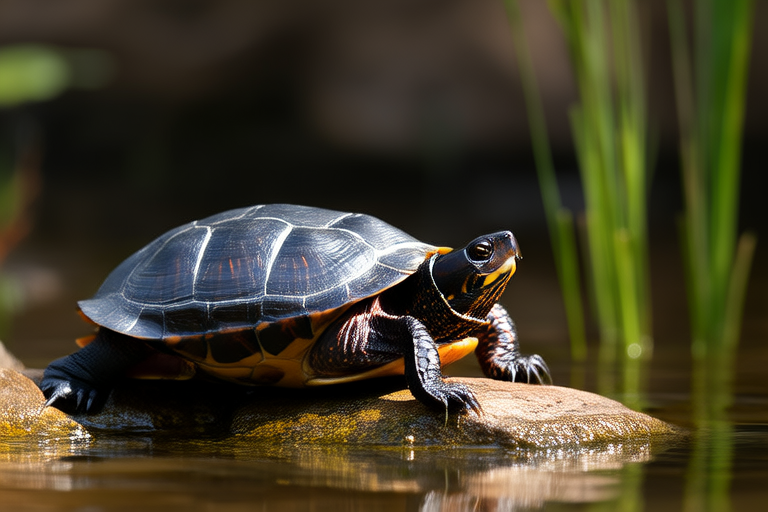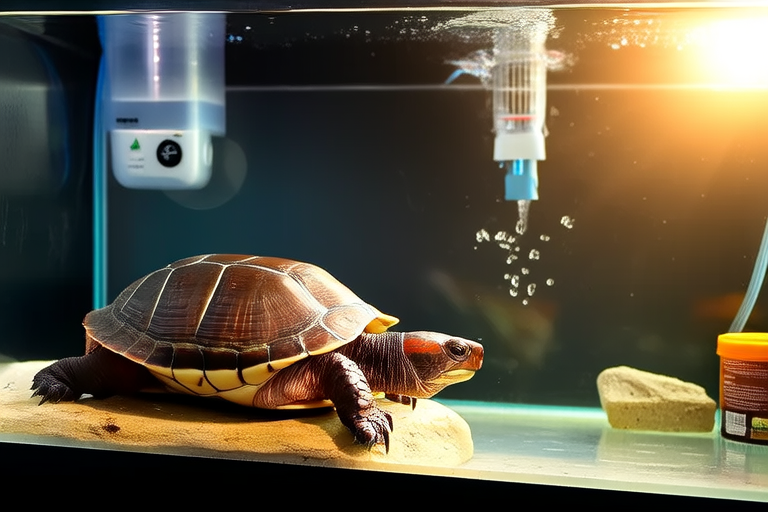
From Egg to Adult: The Incredible Journey of a Red-Eared Slider!
The red-eared slider (Trachemys scripta elegans) is one of the most popular pet turtle species worldwide. This semi-aquatic turtle, native to the southern United States, has captured the hearts of many due to its striking appearance and relatively manageable size. However, behind every successful turtle owner lies a deep understanding of their pet’s life cycle, from the moment it hatches from its egg to its full maturity. This article delves into the fascinating journey of a red-eared slider, detailing each stage of its life, from egg to adult.
The Incubation Period: From Egg to Hatchling
The story of a red-eared slider begins with an egg. Female red-eared sliders lay their eggs in sandy or muddy banks near water bodies, typically in late spring or early summer. These eggs are oval-shaped, approximately 3 cm long, and can vary in color from white to a pale pink.
Incubation lasts around 60 to 90 days, depending on temperature and humidity levels. During this period, the developing embryo undergoes significant changes. Initially, the embryo is little more than a ball of cells, but within days, it develops recognizable features such as eyes, limbs, and a tail. By the end of the incubation period, the fully developed hatchling is ready to break free from its shell.
Hatchlings typically emerge together, often within a few hours of each other. They are tiny, measuring only about 2.5 cm in length, and their carapace (upper shell) is soft and pliable. At this stage, they are highly vulnerable and require protection from predators. For the first few weeks, they remain close to their nesting site, hiding under vegetation or in shallow water.
Juvenile Development: Growing Up
Once out of the egg, hatchlings face a critical phase of their lives, where survival depends on rapid growth and adaptation. Their diet shifts from the yolk sac inside the egg to a more diverse menu, including small insects, aquatic plants, and algae. Juvenile red-eared sliders have a voracious appetite, which helps them grow quickly.
As they grow, their shells harden and develop distinctive markings. The signature red stripe behind their eyes becomes more prominent, giving them their name. By the time they reach six months of age, they are around 5 cm long and have begun to explore larger areas of their environment. At this stage, they are still quite small and should be kept in a tank with appropriate water depth and filtration systems.
Juveniles exhibit playful behavior, often seen swimming vigorously or basking on rocks. Their curiosity and activity levels make them delightful pets, but they also require attentive care. Owners should ensure that their enclosure mimics natural conditions as closely as possible, providing ample space for swimming and basking areas. Regular water changes and monitoring of water quality are essential during this stage.
Maturity: Adulthood and Beyond
Red-eared sliders reach sexual maturity between five and eight years of age. Males, which are generally smaller than females, display courtship behaviors, such as head bobbing and nipping the female’s legs. Females become noticeably larger as they mature, growing up to 30 cm in length.
In the wild, mature red-eared sliders inhabit slow-moving rivers, ponds, and lakes. They are excellent swimmers and spend much of their day basking in the sun to regulate body temperature. Their diet broadens further, including fish, crayfish, and even carrion. Captive adults thrive on a balanced diet of commercial turtle pellets, leafy greens, and occasional treats like earthworms or mealworms.
Adults show distinct behavioral traits, such as territoriality and aggression towards other turtles. It’s crucial for owners to provide ample space and separate tanks if housing multiple adult red-eared sliders. Additionally, regular health checks and veterinary visits are recommended to monitor their well-being.
Health Considerations Across Stages
Throughout their life cycle, red-eared sliders face various health challenges. In the hatchling stage, dehydration and bacterial infections are common. Providing clean, fresh water and ensuring proper humidity levels in their enclosure can prevent these issues. As juveniles, respiratory infections may arise due to poor water quality or insufficient basking opportunities. Maintaining a healthy environment and monitoring for signs of illness, such as lethargy or labored breathing, is vital.
Adults are susceptible to shell rot, a bacterial infection affecting the outer layer of the shell. Regular cleaning of the tank and maintaining optimal water parameters can help prevent this condition. Additionally, calcium deficiencies can lead to metabolic bone disease, particularly in females preparing to lay eggs. Ensuring a balanced diet rich in calcium and vitamin D3 is crucial for preventing this.
Care Tips for Pet Owners
For those considering a red-eared slider as a pet, here are some essential care tips:
- Proper Housing: Provide a spacious tank with adequate swimming and basking areas. A general rule of thumb is to offer 40 liters of water per inch of the turtle’s shell length.
- Diet: Feed a varied diet, including commercial turtle pellets, vegetables, and occasional protein sources. Avoid feeding too much protein, as it can lead to obesity.
- Water Quality: Maintain clean water by regularly changing and filtering it. Use dechlorinated water and consider adding a UVB light to promote vitamin D3 synthesis.
- Basking: Ensure your turtle has access to a warm, dry area to bask. A heat lamp set to 85-95°F (29-35°C) is ideal.
- Veterinary Care: Schedule routine check-ups with a veterinarian specializing in reptiles. Early detection and treatment of health issues can extend your turtle’s lifespan.
Conclusion
The journey from egg to adult of a red-eared slider is nothing short of remarkable. Each stage presents unique challenges and joys, requiring careful attention and care. Whether you’re a novice or an experienced reptile enthusiast, understanding the life cycle of these turtles enriches the bond between you and your pet. By providing a nurturing environment and attentive care, you can ensure your red-eared slider thrives, living a long and fulfilling life.






